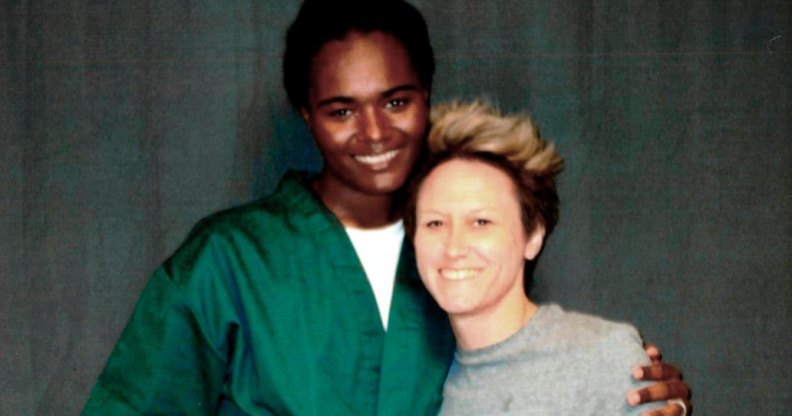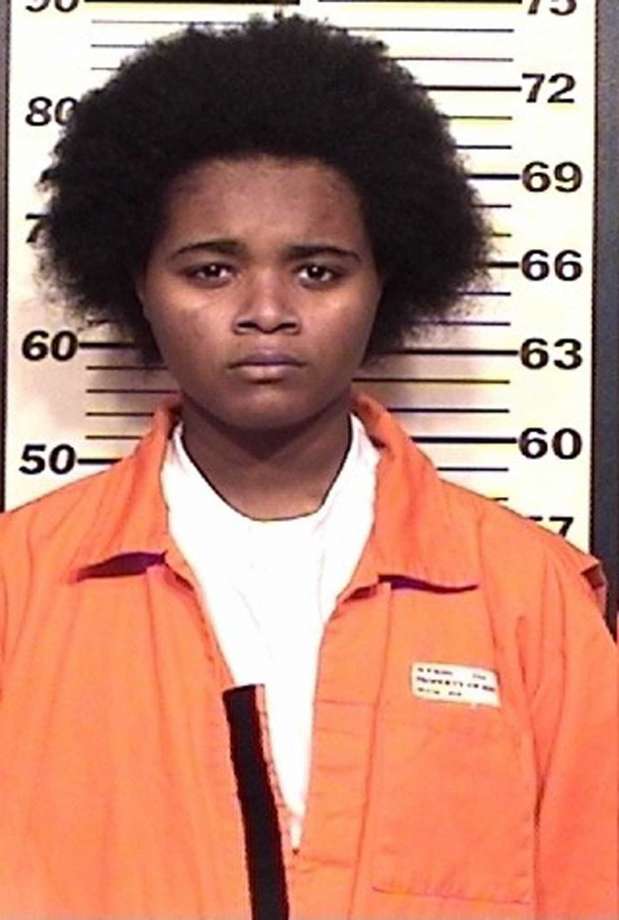Trans inmate raped, beaten in men’s Colorado prison gets $170,000 compensation

Transgender inmate Lindsay Saunders-Velez, left, with her mentor at the Colorado Territorial Correctional Facility in Cañon City (Lindsay Saunders-Velez/CPR)
A 19-year-old transgender woman who was raped and beaten while incarcerated in a men’s prison has been awarded $170,000 in compensation after suing the Department of Corrections.
The settlement also includes several key changes to Colorado’s treatment of transgender inmates, prompting conversations which could lead to an improvement in conditions for transgender people in prison.
Saunders-Velez, now 21, was sent to prison in 2017 for a probation violation. She asked to be placed in a female facility as she first expressed her female gender identity at the age of six, and started hormone replacement therapy at 16, her lawyer said.
Following this she was sent to a juvenile females’ prison, but was later transferred to a men’s prison in Cañon City where she alleged being raped, assaulted and harassed.
For the first time in a long time, she has hope.
The Colorado Department of Corrections evaluates transgender inmates on a case-by-case basis to determine which gender they will be housed with, according to The Denver Post.
Despite being raped twice within two months, prison officials refused to transfer Saunders-Velez to a female institution, or even back to her previous pod at the men’s facility where she had friends who supported her.
Her complaint accused staff of refusing her requests to only be searched by female guards and be allowed to purchase women’s underwear and facial hair remover. She said guards also refused to use the correct pronouns for her or let her go by her female name.
In 2018, aided by LGBT+ and civil rights advocates, she filed a lawsuit against the Department of Corrections. It was announced on July 10 that she will receive a settlement of $170,000, including $10,000 for medical and mental health services.
“For the first time in a long time, she has hope,” Paula Greisen, Saunders-Velez’s attorney. “She feels her voice has been heard.”

Booking photo of Lindsay Saunders-Velez (Colorado Department of Corrections)
A significant step for transgender inmates
The settlement also includes more training for corrections officers, changes to the in-take process and increased options for female hygiene and commissary items in male prison — a significant step for transgender inmates.
“Lindsay wouldn’t have agreed to this settlement without some of these systemic changes,” said Greisen.
“We’re extremely pleased the Department of Corrections, the state of Colorado and the attorney general’s office has been engaged in very productive discussion, not just about Lindsay’s case, but about fair treatment of the transgender community.”
Saunders-Velez is expected to be released from prison in October.
Although her request to be housed in a women’s prison was denied, as part of the settlement she was transferred to a Denver facility for male inmates where she feels safer, Greisen said. She also will no longer be regularly strip-searched by male guards.
Transgender inmates are at extreme risk of rape and violence
In the US about 3,200 inmates identify as transgender, and almost 40 percent report being sexually assaulted in prison, according to the ACLU. Nearly a third are placed in solitary confinement, mostly because they are vulnerable to attacks from other inmates.
It is unclear how Saunders-Velez’s case will affect future housing decisions, but she and her lawyer have hope the lawsuit’s result could be “a sign of shifting attitudes in state government.”
“We still have a long ways to go, but you have to first start by understanding and respecting the dignity of women,” Greisen said. “The settlement is a very important step that the state of Colorado has taken to acknowledge this community.”
Lawrence Pacheco, a spokesman for Attorney General Phil Weiser, said the state did not admit any liability in the settlement.

